
Developing a Strong SEO Foundation
Article Summary
Developing a Strong SEO Foundation For Your Tech Marketing Strategy delves into the intricacies of search engine optimization (SEO) and its significance in B2B marketing. The article emphasizes the transformative role of search engines in the information age, with Google processing an astounding 40,000 search queries every second. These search engines employ intricate algorithms to present the most relevant content based on user queries. With the competitive nature of content creation, businesses invest heavily in understanding these ever-evolving algorithms to secure a spot on the first page of search results. B2B marketers are increasingly recognizing the potential of SEO, with statistics revealing its effectiveness in lead generation. The article underscores the experimental nature of SEO, emphasizing the importance of understanding user intent rather than solely focusing on search engine algorithms. With Google introducing nearly 1,000 algorithm updates annually, SEO demands constant attention. The article also breaks down SEO into on-page and off-page strategies, highlighting the pivotal role of content quality, keyword optimization, and page speed. The piece concludes by emphasizing the value of regular content audits to refine SEO strategies and maximize impact.
Part V Of This 10-Part Blog Series on Enterprise IT Content Marketing Fundamentals
In the previous article we discussed: An Introduction to Gorilla Guides.
In This Article:
- An Introduction to SEO
- The Mysterious Google Algorithm
- Top SEO Ranking Factors
🤫 PS: Looking for pricing on custom Tech content? Get a price list here
Now that we’ve introduced our Gorilla Guide series (and content subscription model) as a promising catalyst to your content marketing success, the upcoming articles, including this one, will dive deeper into the different tactics and actionable tips on how exactly you can leverage ActualTech Media content to drive your efforts.
In this chapter, we’ll paint a complete picture of the art and science of SEO, why it’s vital for B2B success, and how your team can lay down a solid foundation.
Let’s dive in!
A Sneak Peek into the Vast World of SEO
Search engines are easily one of the best things to happen to humanity. As key features in the age of information, they’re used by consumers and businesses alike to get instant access to any content that can help answer their questions.
Note to Reader: Pay Attention
On average, Google processes around 40,000 search queries every single second! This translates to over 3.5 billion searches per day. This is a small glimpse of just how much we rely on search engines for finding information and discovering new things.
In laymen’s terms, search engines like Google are Internet directories that index and fetch information (webpages, images, videos, news, and more) that is most relevant to whatever you type in.
Of course, how it all works is a lot more complicated than that. While they might make it seem simple, there are complex algorithms that work behind the scenes to display the most relevant results each time you type in a query—based mostly on the content that those sources have published.
Search engines analyze (or “crawl”) billions of live webpages on the Internet, store what they’ve learned about them in a database (a process called “indexing”), and then decide which order to rank them in for various search queries. Ranking, as you’ll soon see, depends on a bunch of different factors. The search engine’s goal is to surface and rank the content that is most applicable to your query.
With potentially hundreds of websites producing content on similar topics and fighting to grab the attention of the same segments, businesses in every industry are collectively spending a fortune on understanding ever-changing search engine algorithms and experimenting with different tactics to appear on the first page of search results—a practice that we all know and love as search engine optimization, or SEO.
B2B Marketers Are Going ‘All In’ on SEO!
If you haven’t been focusing on SEO lately, you’re missing out on some serious conversion potential. Don’t believe us? Here are some eye-opening statistics on just how effective SEO is in the B2B battleground:
Approximately 45% of enterprise businesses were investing roughly $20,000 in SEO in 2017. That figure has likely increased over the past few years.
Nearly 57%of B2B marketers claim that SEO generates more leads than any other marketing initiative. Whoa!
62%of business buyers say that they make their purchase decisions by online content alone.
SEO is an experimental practice. A certain set of tactics that work for one website may not necessarily work for another.
Google has told us that rankings are based on hundreds of factors, but has never revealed (and will never reveal) exactly what those factors are.

As a result, marketers have spent years trying to figure out (by experimenting) those ranking factors and how the algorithm works. See image above for an illustration of Google’s confirmed ranking factors.

The fact of the matter is that modern SEO is more about understanding the users, and less about trying to wrap your head around how the search engine algorithms work (💡).
This is something that even the search engines have been struggling with for years. Google and other search engines roll out tons of algorithm updates throughout the year that bring them closer to understanding the search intents behind queries and the type of content that would be best suited to answer them.
At the end of the day, understanding search intent is an AI and Big Data problem. That’s why companies like Google love to collect data. More data to train AI with means more accurate search results.
While there’s still a lot of ground to cover, search engines have certainly come a long way. Today, a Google search almost always returns results that satisfy the intent a user had when conducting the search.
All of this implies that, if you want prospects to visit your websites in droves, it’s time to buckle down and focus on SEO.
Google Rolls Out Close to a Thousand Algorithm Updates Every Year!
To stay on top of the search game, Google rolls out nearly 1,000 algorithm updates every year. Needless to say, this keeps the global SEO community on its feet, as some of the more major updates have huge implications for websites in terms of rankings. That’s why SEO isn’t a “set it and forget it” kind of deal.
Remember: The end goal of nearly every algorithm update is to improve the UX. A recent example of this was the 2019 rollout of the natural
language processing model “Bidirectional Encoder Representations from Transformers” (or “BERT,” if that’s a mouthful), which helps Google continue to better understand the actual intent behind different searches.
Breaking Down SEO
Generally, SEO can be split into the following two categories:
- On-Page SEO: This refers to all of the efforts that you make to post content to your website, tweak its source code to offer a smooth experience, and design your pages to deliver a memorable experience and make the users stick around.
- Off-Page SEO: This includes all the efforts you make outside your website (hence the name “off-page”) to generate links and boost the visibility of your content on different third-party platforms.
Check out the image below to learn more about the basic building blocks for any SEO strategy.
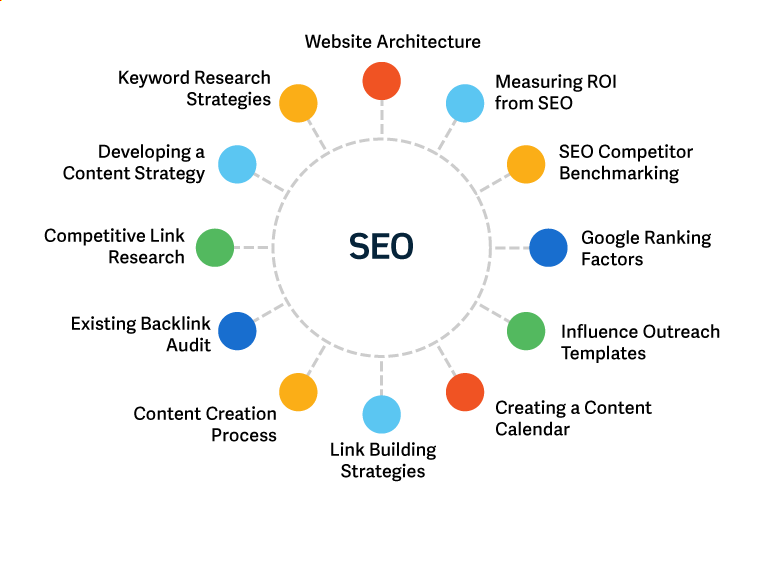
Since we’ve already discussed off-page SEO at some length in this article on link building, for now, we’ll keep most of the discussion limited to on-page SEO.
As we pointed out earlier, there are several factors (more than 200, at least) that can affect the chances of your pages showing higher up in search results. A few of those that fall under on-page SEO include:
- The Content Itself: The depth and overall quality of your content matters a lot. The deeper you dive into a topic and produce content with user intent in mind, the more time your visitors will spend engaging with your website.
- Keyword Usage: The way you sprinkle your primary and secondary keywords (phrases that your target audience searches for) throughout your content matters a lot. We’ll dive deeper into keyword technicalities shortly.
- Site Speed: The speed at which the website loads can make or break the positive experience that you wish to deliver. Did you know that a delay of just 100 milliseconds in the loading speed of your website can decrease conversions by 7%? Amazon and Walmart reported a 1% loss in revenue from a 100 millisecond delay. Ouch!!
- Mobile Optimization: Starting back in 2020, Google implemented mobile-first indexing for all websites. Under this approach, while indexing and ranking pages, the search engine crawlers first look at how well they are optimized for mobile users. For that reason, if your website doesn’t load properly on (or isn’t optimized for) mobile devices, now would be a good time to get on that.
- URL Structuring: Pages with shorter and memorable URLs, that also include the primary keywords, generally have better chances of ranking than pages whose URLs don’t tick those boxes.
- Security: Google takes security seriously, and for that reason, it rewards websites that use secured socket layer (SSL) certificates.
- Internal Links: If a page has a good amount of internal links from well-performing pages pointing toward it, its chances of ranking higher increase (remember link juice?).
And that barely scratches the surface.
While improving any factor brings you one step closer to ranking higher in the SERPs (Search Engine Results Pages), one thing that you absolutely can’t compromise on (or can’t even get anywhere without, for that matter) is, you guessed it; content.
The Must-Have SEO Stack for the Modern Marketer
Equip your team with the tools they need to plan out and execute their SEO strategy.
Some of the hottest resources include:
Ahrefs: One of two go-to platforms for top-of-the-line SEO tools (such as keyword research, link building, site audit, and more) and resources for millions of marketers around the globe.
SEMrush: The other go-to platform. A one-stop solution offering an extensive suite of SEO, PPC, and social media marketing tools.
BuzzSumo: An online tool that scours the Internet for trending content and helps you discover new ideas.
Exploding Topics: A free tool that lets you identify topics with trending potential from different industries.
You can have the fastest website with all of the technical variables taken care of, but if it doesn’t have highly valuable content, it won’t rank. (And that’s no bueno.) Even if—by some cosmic accident—it does rank, you won’t be able to engage, convince, or convert prospects.
That being said, let’s look at the process of how you can create highly valuable and SEO-optimized content assets, from keyword research to actual creation.
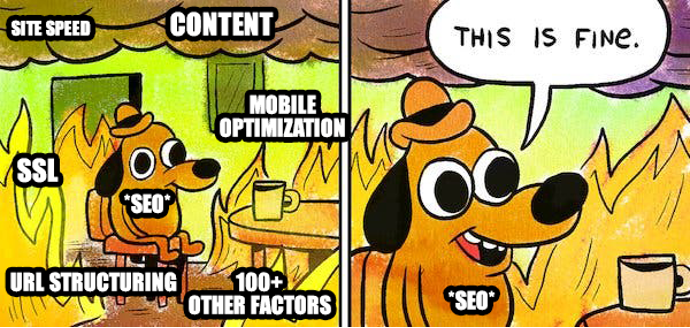
The Speed at Which Your Website Loads Matters!
In a fast-paced world, it only makes sense for your website to not take longer than a few seconds to load. Search engines reward websites that load quickly, and, of course, your visitors will love you for it. Here are a few things that you can do right now to optimize your website to load faster:
- Compress all images and videos on your website.
- Minify your CSS and JavaScript by removing unnecessary characters and whitespace.
- Use a content distribution network (CDN) to accelerate delivery of pages.
- Enable browser caching on your website. This way, every time a user revisits your website, their browser won’t have to load all the content from scratch—cutting down on the loading time.
- Keep checking the overall health of your website on Google PageSpeed Insights. This tool scores your website on a scale of 0 to 100 and provides actionable tips on how you can improve it.
Keywords, Keywords, and What? Keywords!
First and foremost, you have to start by discovering, identifying, and selecting key phrases that are closely related to what you do and what your ideal prospects usually search for—known as “keyword research.”
This is the most basic aspect of SEO and lays the foundation for any comprehensive content strategy. Surprisingly, this also happens to be one of the things that most marketers get wrong. Since keyword research is an integral part of any SEO strategy, the practice has also evolved over the years. It deepened from only focusing on the individual keywords to understanding the reasons behind why anyone would search for it in the first place. See the image below for a quick comparison.
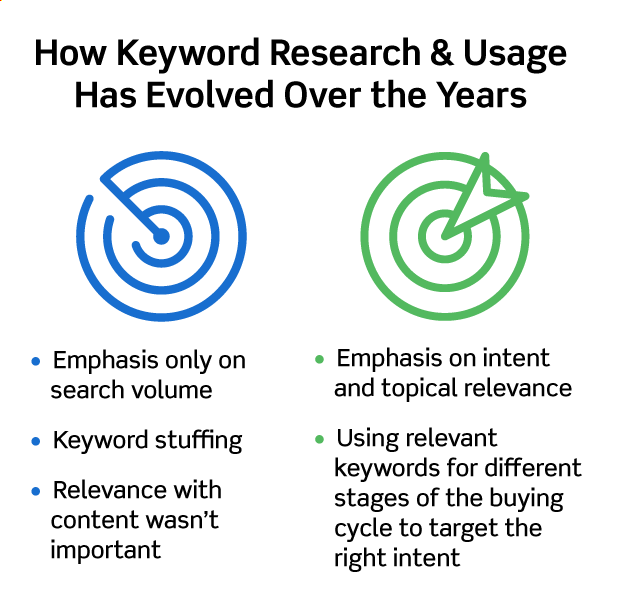
By identifying the right keywords, you’ll get a roadmap (or topics) for your on-page and off-page content efforts. Here’s a complete breakdown of the keyword research process:
-
Create a List of Generic Topics
Before anything else, start by brainstorming topics that you feel are related to your niche. For now, don’t worry about digging deep—just think of the terms that your target audience could search for off the top of your head.
For instance, if you offer hyperconverged infrastructure solutions, a few base topics could be:
- HCI architecture
- Edge computing
- VDI and DaaS
-
Discover Actual Keywords to Target
With a list of base topics at your disposal, it’s time to pick out specific keywords that you wish to target. Before we discuss the actual steps, it’s important to familiarize yourself with two of the most critical metrics that you’ll come across while conducting keyword research:
- Keyword Difficulty (KD): Measured as a percentage, keyword difficulty reflects how challenging it would be to rank for a particular keyword. Websites with high DAs usually find it easier to rank for high difficulty keywords, whereas others have to craft out-of-this-world content and garner good backlinks to even come close. KD is calculated using factors such as the quality of the existing content, the DAs of the websites currently ranking for them, and the number of people searching for that keyword.
- Search Volume: This shows how many times the keyword is searched for by users (usually on a monthly basis). The higher the search volume, the more potential a keyword packs for bringing in that sweet, sweet traffic.
Get Base Topic Ideas from Gorilla Guides
While you can extract complete articles from one, a Gorilla Guide that discusses your areas of specialty in great depth can also provide you with some great ideas for base topics for SEO efforts. A quick overview of the table of contents can help you identify promising starting points for your keyword research process.
With that in mind, it’s often useful to target keywords with low difficulty scores and high search volumes.
Unless you already have a stellar DA (Domain Authority), you don’t want to go after keywords with 40+ KD scores. At the same time, you don’t want to write content on stuff that no one is searching for in the first place. To find the perfect difficulty-to-volume balance, use the Tripod Rule shown in the image below.
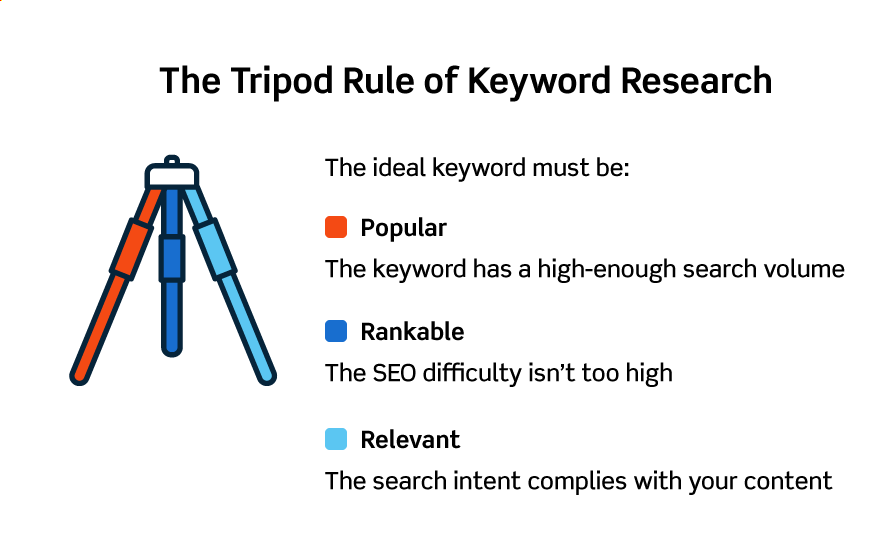
With that out of the way, it’s time to plug in your base topics to the keyword research tool of your choice and extract related keywords. To help you narrow down your focus even further, here is a quick breakdown of the main types of keywords by length:
- Short-Tail: Also known as “head” or “broad” keywords, these are really short keyphrases (one or two words long) that are usually the main topics within a niche (e.g. “VDI”). These keywords are very difficult to rank for and have high search volumes.
- Long-Tail: As opposed to short-tail, these keywords are longer (four words or more) and are more specific in nature (e.g. “how to do 3D modeling in VDI environments”). Long-tail keywords are queries that usually begin with words like who, what, when, why, how, and so on. Due to their specific nature, long-tail keywords are generally less competitive and usually have lower search volumes than their short-tail counterparts, as illustrated in Figure 16.
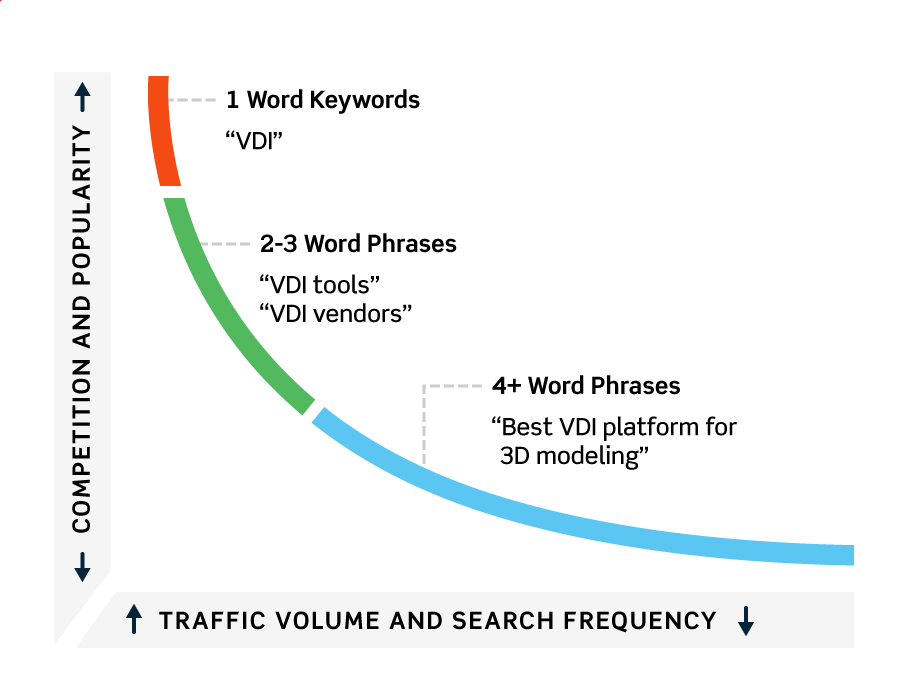
If you already have existing content assets at your disposal, you can potentially stumble upon long-tail keyword ideas that you can elaborate on. For example, the callouts in our Gorilla Guides might help turn up great long-tail keyword material.
It’s worth mentioning that, at one point, marketers were obsessed with Latent Semantic Indexing (LSI) keywords. These are words that are closely related to your keywords. However, John Mueller, a Webmaster Trends Analyst at Google, came out and said that LSI keywords weren’t a thing.
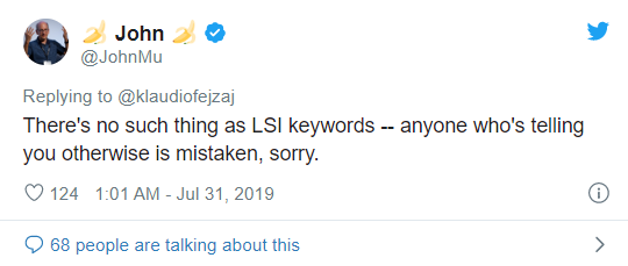
Moving on.
Since search engines have become smart enough to understand the intent behind search queries, they look for any relevant phrases that might help them in displaying the perfect results.
For instance, “networking” can either mean building profitable business relationships or a system used to transmit bits of data over wires. Including words like “TCP/IP” and “computer” will let the search engine know that the content is about the latter. The search engine will then use this information when deciding to show results each time a user types in a relevant query.
Bonus: Look for Keyword Ideas on Other Platforms
At times, when you’re digging for new keyword/topic ideas, the typical keyword research tools don’t cut it. That’s because these tools focus on just numbers. Sometimes you need inspiration!
If you’re in a niche like software-defined storage for containers, chances are, you don’t have hundreds of thousands of people searching for the keywords that are related to your business. However, that doesn’t necessarily mean that those keywords aren’t worth chasing after.
To discover these untapped opportunities, look for themes and trends on other platforms that aren’t primarily meant for keyword research.
A few of these include:
- Quora
- Google Trends
- Tech journals
Pro Tip: Use Reddit and Subreddits to find long-tail keywords.
With a little research, you’ll be able to discover emerging, low-competition topics that might be of interest to your target audience.
Craft Content with SEO Best Practices in Mind
With a list of keywords and potential topics at your disposal, it’s time to get to work and craft quality content that will rank higher in the SERPs.
Here are some not-so-secret secrets for crafting content that will rank:
Focus on Quality—Not Length
A common mistake that most content creators make is thinking that longer content will always perform better than shorter assets.
While this may be true for certain topics (apparently like this one...) that demand a good few thousand words to do them justice, hitting a certain word count should be the least of your concerns when writing most content.
The thing is, a lot of good content goes in-depth and covers everything relevant or related to a topic in detail, providing unique perspectives and insights along the way. This just ends up making the content longer. Folks sometimes overlook this and just aim to create long content.
Therefore, instead of length, you should focus more on quality and depth.
Here are some quick tips to help you do that:
- Find new and interesting angles to cover a topic compared to everything else out there. At the very least, cover everything in an engaging and entertaining way.
- Analyze the top-ranking content from your competitors on the same topic. What makes their content so great? How can you make it even better? If possible, try providing something that others can’t replicate—such as original data, custom infographics, videos, or your own unique analysis.
- Write with search intent in mind. What does the user expect to see before clicking on a link? What’s the best way to satisfy that intent while also accomplishing your underlying goals?
- Focus on aesthetics. Don’t compromise on the design of your content (or website, in general, for that matter). It does matter when it comes to engagement.
Be Smart with Your Keywords
While crafting your content and certainly before hitting publish, there are a few things that could give you that extra push and help you cross the finish line.
Sure, your content needs to be written naturally, with the first priority being satisfying the user intent. However, the proper usage of your focus keyword is still super important in getting the content to rank. In most cases, you should include your main keyword in:
- The title tag (see Figure 17)
- In the first 100 words of your content
- The meta title and description
- In other low-level header tags (H2 and H3)
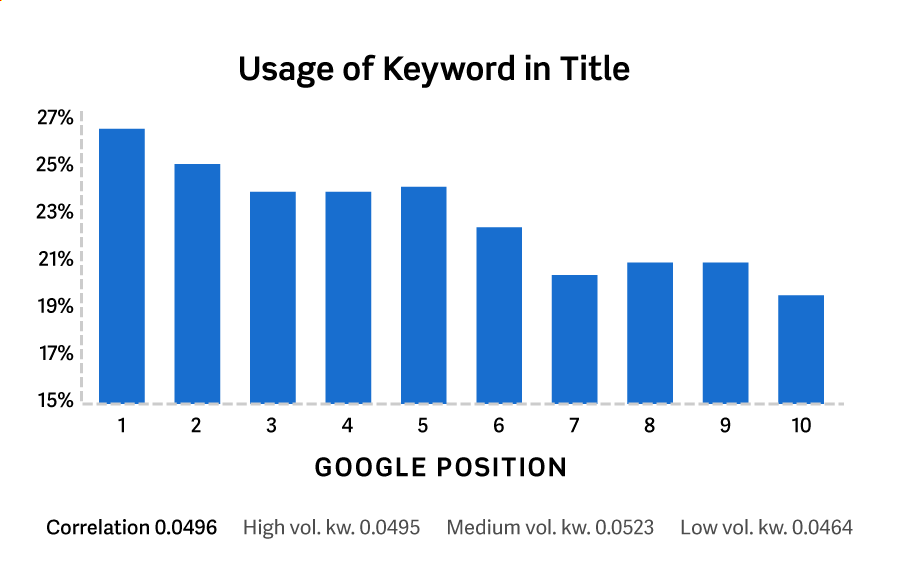
Optimize for Page Speed
Once you hit that publish button, run over to Google PageSpeed Insights to check for any speed issues. Some potential issues (and their fixes) include:
- Large media files (compress all images and videos)
- Large scripts (minify the CSS and JavaScript)
- Poorly written plugins (remove/replace them)
Psst … Repurpose the Content in Your Gorilla Guides!
Again, creating blog posts and articles from scratch can be difficult. However, if you have content assets that are already performing well (such as a video, podcast, or an e-book), you can repurpose them into content meant for SEO.
As an example of this strategy in action: ActualTech Media had a book written by a subject matter expert - Allan Liska on Ransomware: "Ransomware - Understand. Prevent. Recover". We chose to repurpose that content into a full website on the subject, and has quickly become THE resource for Ransomware information, eduction, tools, and support online.
You can do the same with an in-depth subject specific Gorilla Guide, for example, generating content for specific SEO goals becomes a lot easier.
You can extract ready-to-go reference articles (or at least, big chunks of ready-to-use information), optimize them for SEO, and publish them on your website or any third-party platforms, such as Medium, for link-building purposes.
If you’re gating your Gorilla Guides for lead generation, don’t worry about the reference articles cannibalizing your lead gen efforts. It’s a common concern, but in practice, it doesn’t happen.
If anything, the reference content will help you set the main stage for the actual Gorilla Guide, spark interest, and potentially bring in more prospects who will convert into leads.
By carefully extracting just the right amount of content for your articles and embedding enticing CTAs that compel your readers to check out the entire Guide, you can potentially kill two birds with one stone by ranking for competitive keywords and getting new leads in the process. See Figure 18 for all kinds of ways that you can deploy and repurpose a Gorilla Guide. You’ll see that SEO and paid search support are just a few of the myriad ways.
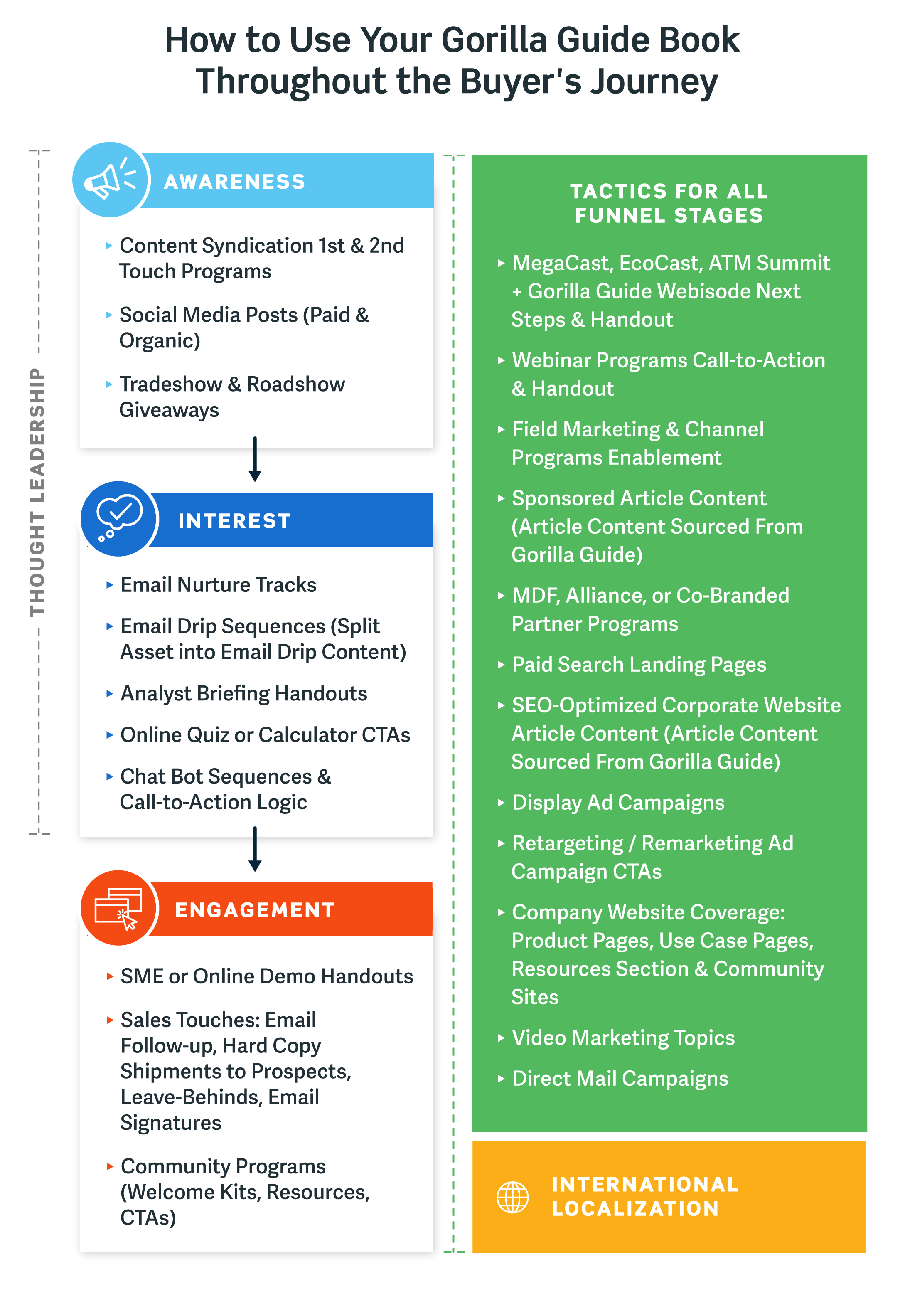
Your Action Item: Perform an Audit
If you don’t have an existing blog or other resources on your website, feel free to skip this section.
For everyone else, performing a quick audit can reveal some amazing opportunities to further perfect your existing content and plan out your future assets.
Furthermore, this will also help you decide which content assets to keep, which ones to update, and which ones to remove.
Here’s how you can go about doing this. It may only be three bullets, but completing this audit is a major feat.
- Create a list of all your existing content on a spreadsheet. This should also include the keywords they’re targeting and currently ranking for. You may have to leverage a third-party tool (like SEMrush or Screamingfrog) for this purpose. Download and use this detailed template by Buffer to organize the data (you can modify it to your liking).
- Next, extract and slot in data that reflects the performance of your content. Some essential numbers that you should look at include rankings, organic traffic, bounce rate, average time spent on page, and page speed. If you have an analytics tool set up, such as Google Analytics, you’ll easily collect this information. If not, you can acquire the historical data from a conventional SEO tool (such as the Traffic Analytics feature of SEMRush).
- Categorize and deal with your content pieces on the basis of their “health.”
- Leave your best-performing content assets untouched.
- Consider updating the content assets that perform well, but not as good as you’d hope for.
- Remove any assets that don’t bring anything to the table.
Performing a content audit like this on a regular basis gives you the data you need to make informed decisions about your SEO strategy moving forward.
ActualTech Media is NOT an SEO Agency, but we are the successful Tech Marketers' secret weapon - and as such, we are in your corner to help you leverage the custom expert content we create in as many ways as possible. Whether that is through republishing it for SEO purposes as discussed in this article; or you choose to leverage it to get more leads through our targeted B2B Content Syndication services; or you choose to elaborate on the series and turn it into pre or post Tech Webinar support on the subject. Whatever your goal - ActualTech Media can help you reach it. Let's chat about it.
In our next article we will discuss: Catalyst To Your Sales Success.